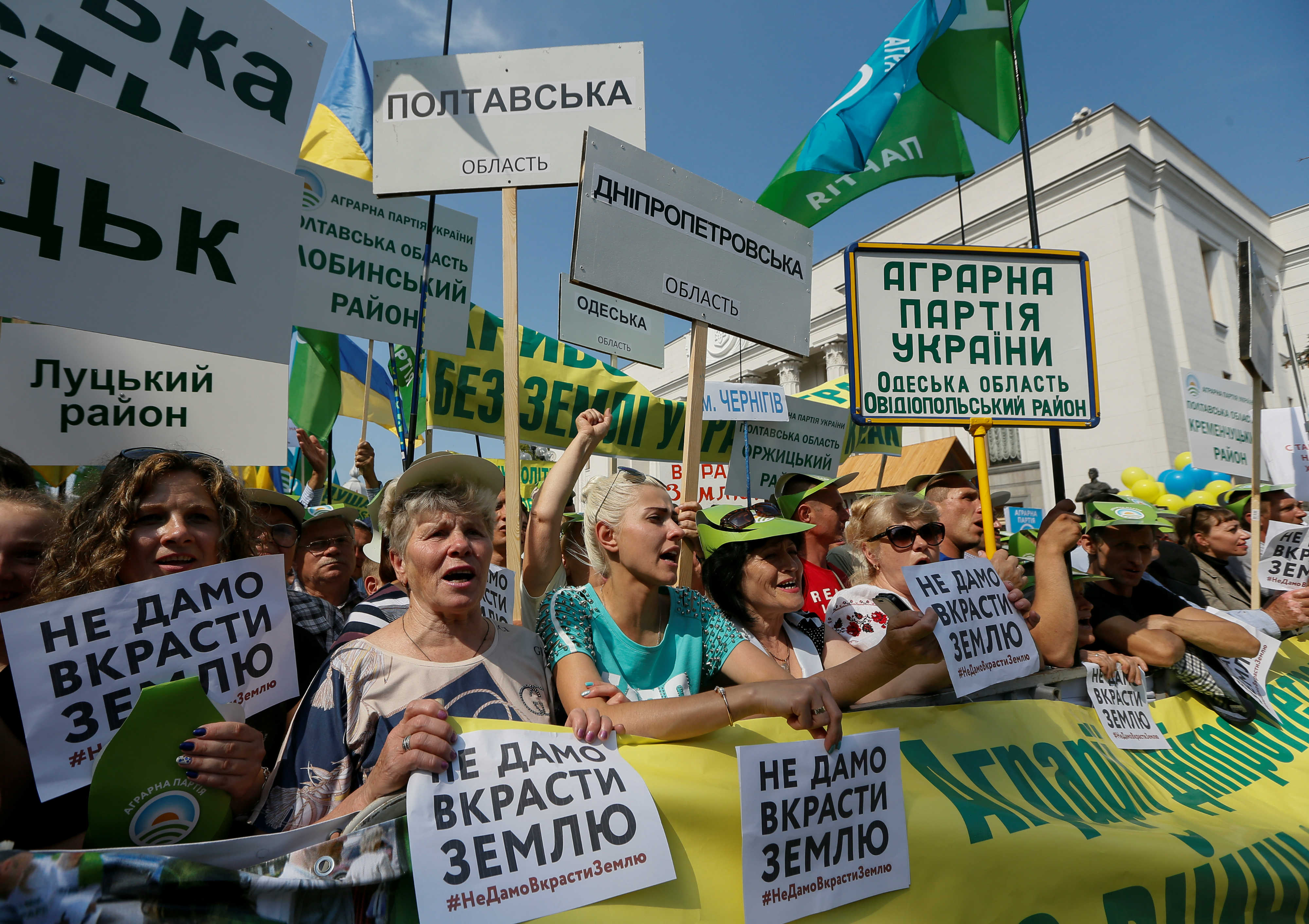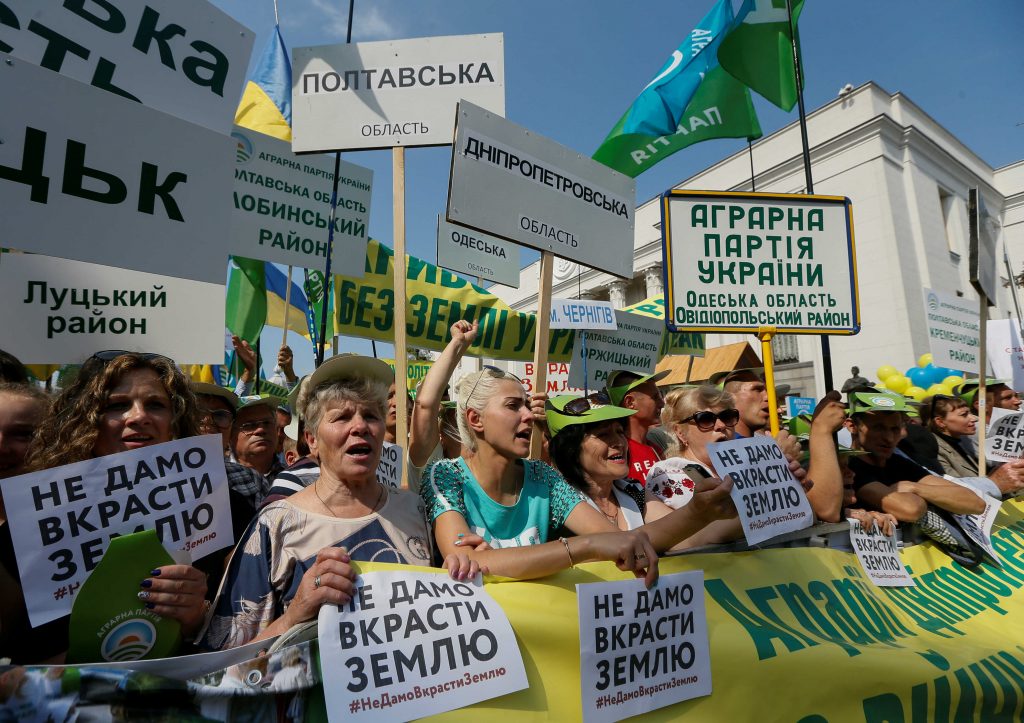 Ukraine still needs a powerful push to finally shrug off the 2014-2015 crisis, which caused its economy to contract by 16.5 percent. The IMF prescribed anticorruption reform, privatization, pension reform, and allowing private sales of land to give Ukraine that boost. It is important to move fast with these reforms for two reasons: first, elections are fast approaching; and second, peak foreign debt payments are due in 2019.
Ukraine still needs a powerful push to finally shrug off the 2014-2015 crisis, which caused its economy to contract by 16.5 percent. The IMF prescribed anticorruption reform, privatization, pension reform, and allowing private sales of land to give Ukraine that boost. It is important to move fast with these reforms for two reasons: first, elections are fast approaching; and second, peak foreign debt payments are due in 2019.
Of the major reforms currently being considered, land reform would have the largest economic impact by far. It would bring investment into the agricultural sector, create new lending opportunities for the banking sector, which is still in crisis, and bring important improvements to rural communities through higher land rent fees and greater protection of property rights.
Still, this reform faces the greatest risk of being derailed, mostly due to a lack of political consensus. Two draft laws allowing the sale of agricultural land were initiated by MPs from President Petro Poroshenko’s bloc, but neither received sufficient support in the Rada. Both would have allowed Ukrainians and companies to buy and sell land, and both envisaged a separate procedure for the sale of state-owned arable land, which constitutes 10.5 million hectares, or a quarter of Ukraine’s arable land.
Harsh criticism of the drafts in the Rada prompted Prime Minister Volodymyr Groisman to come forward with a limited version of reform instead that would allow only private citizens to purchase land and would restrict the amount of land held by one person to 200 hectares. This idea met resistance from the agrarian community, which argued that under such conditions, banks would not see land as liquid collateral and would refuse to lend to private farmers, causing them to lose land. The All-Ukrainian Association of Farmers also argued that this would limit the circle of potential buyers to rich Ukrainians.
The issue quickly became political after Yulia Tymoshenko, the head of the Batkivshchyna Party, urged people to abandon the idea altogether, calling for a national referendum. Leaders of the Svoboda party and the populist Radical party sided with Tymoshenko. In addition, several MPs challenged the land sale moratorium in the Constitutional Court. However, the ruling is not expected to come soon.
The controversy forced land reform supporters to focus on a more incremental version that would involve first unblocking the sale of state-owned land, followed by unblocking the sale of land to private citizens and companies within three years. This version was supported by the Agrarian Ministry Task Force and the Rada Agrarian Committee.
On June 7, the government adopted a strategy that would allow state-owned land to be rented out only through competitive auctions, with a limited timeline for such agreements of under seven years, and sets the price at no less than 8 percent of the assessed land value. This is an improvement over the current situation, in which most state land is rented for up to forty-nine years at a minimum of 3 percent of the assessed land price. However, given the lack of consensus, there is a real risk that further steps to land market reform will be delayed again.
Large agriholdings, both domestic and international, have about six million hectares of land in their operation in Ukraine, and are one of the key groups that would be affected by land market reform. Efficiencies brought by these large companies put Ukraine firmly among the top eight world grain exporters, and the sector is the top foreign currency earner for the country. It is also actively attracting foreign investment to build food processing plants, port infrastructure, and storage facilities.
While lifting the land sale moratorium is expected to increase land lease costs for agriholdings, the greater certainty that will come with the new land tenure brought by the land market is expected to enable agriholdings to take a longer-term view of land management and soil conservation. Large agriholdings have generally welcomed the introduction of the land market, with a caveat that there should be a “civilized market” that would prevent attempts to disrupt the sector’s operations, ensure transparency of transactions, and invite the widest circle of investors.
At the same time, Ukraine’s vibrant sector of small and medium farmers is often overshadowed by the country’s large agriholdings. While giant agriholdings focus mostly on export crops like grain and sunflower seeds for oil, smaller farms and individual companies produce about 70 percent of Ukraine’s milk, 40 percent of its meat, and over 80 percent of the country’s staple vegetables and fruits. These farms often perform important social roles for their communities, despite operating in an unfavorable environment.
Small and medium-sized farms often meet fierce opposition from local ‘minigarchs’—well-connected regional tycoons, usually former heads of collective farms, who use their influence to take advantage of deficiencies in land property accounting and protection to keep small landowners from pulling away from collective farms, while underpaying them for leasing their land plots. Access to finance is the major issue for small farmers, although banks will be able to increase lending to them using land as collateral if land reform goes through.
Postponing change keeps Ukraine in the unfortunate company of a handful of countries that have not liberalized their land markets. Ukraine must find political consensus on the land issue if it wants to see rapid growth.
Oksana Bedratenko is an independent analyst based in Washington, DC; she formerly served as the Senior Local Economist at the US Embassy in Kyiv. She tweets @Bedratenko.
Image: People take part in a rally against proposed land reform laws in front of the parliament in Kiev, Ukraine, June 7, 2017. REUTERS/Valentyn Ogirenko
